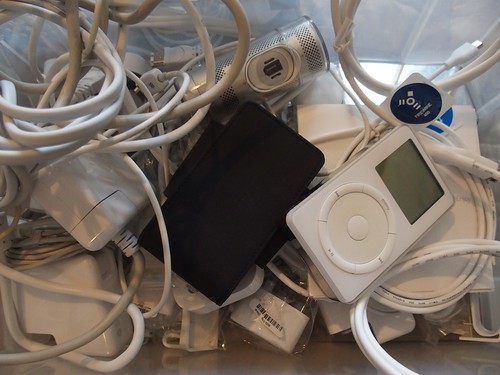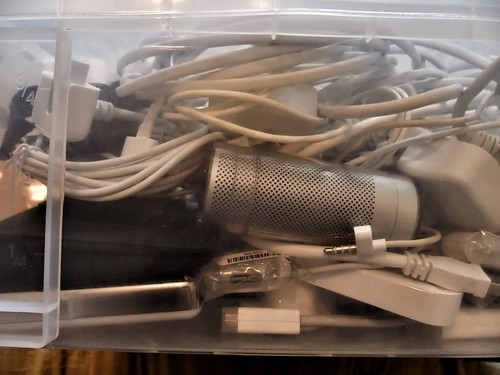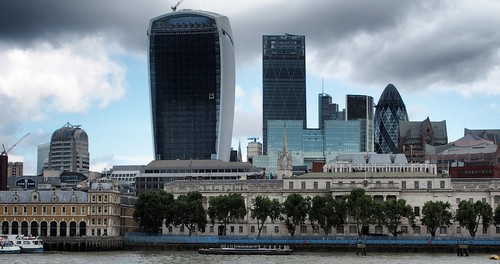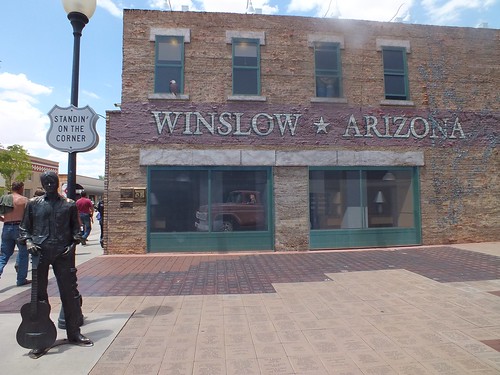Wednesday, 3 September 2014
Tuesday, 2 September 2014
casa tomada or maybe garaje tomade?

The big truck came to take the filled skip away this morning. The clearing process started at one end of the house, then out to the garage and finally into the skip.
I've seen whole new genus of garage spiders in the process, as well as all manner of other bug, many of which are now on a surprise trip to another location. No Calponia Harrisonfordi though.

Of course, the clearing process unearths further historical artefacts and can create that 'I just threw one of those away' moments. Some ruthlessness is required to preserve sanity, linked with a passing interest in blogging potential of discoveries.
In practice, it's still difficult to keep up with even recent events, let alone digging further into the archives. As an example, something I didn't mention recently was our visit to the Saatchi for the Panagaea Exhibition, featuring African and South American artists.
My photo shows Rafael Gómezbarros' big ant like creatures, representing the human scale of often unseen displaced people crossing the globe.
Monday, 1 September 2014
oops, there goes another 400 nanoseconds
I just updated one of the servers in rashbre central and after I'd tested that it was working properly I decided to move it to a different room. Instead of a little stack of boxes with twinkly lights, this one now shimmers alone at the far end of a 30 metre ethernet cable.
I went through the slightly irrational thought process that moving it further away would somehow impact its performance. Because it's only running along a gigabit ethernet, it won't make any material difference, of course, but it somehow feels as if moving it further away changes things.
Electricity flows pretty quickly, and I remember the Grace Hopper visualisation of a light-nanosecond. Yes, in a nanosecond speedy light travels around .299 of a metre, or roughly one foot.
Electricity can only propagate at that rate in a superconductor or a vacuum and is slower along, say, copper. For a computer's main processor, the nanosecond is already a finite design limit, but as soon as the action moves to a disk or a bit of wire things slow down dramatically. I believe a nanosecond's proportion to a second is like a second's proportion is to 31 years. At such a rate a CPU cache lookup would be half a second, but a moving the read head on a disk would take four months.
So I don't need to worry about the 60 metre return trip to the relocated twinkly box. With copper wire to slow down the electricity I reckon I've added a good 400 billionths of a second to the latency. Putting it another way, I'd need to have made 2.5 Million return trips to have added a single second.
I think I can handle that.
I went through the slightly irrational thought process that moving it further away would somehow impact its performance. Because it's only running along a gigabit ethernet, it won't make any material difference, of course, but it somehow feels as if moving it further away changes things.
Electricity flows pretty quickly, and I remember the Grace Hopper visualisation of a light-nanosecond. Yes, in a nanosecond speedy light travels around .299 of a metre, or roughly one foot.
Electricity can only propagate at that rate in a superconductor or a vacuum and is slower along, say, copper. For a computer's main processor, the nanosecond is already a finite design limit, but as soon as the action moves to a disk or a bit of wire things slow down dramatically. I believe a nanosecond's proportion to a second is like a second's proportion is to 31 years. At such a rate a CPU cache lookup would be half a second, but a moving the read head on a disk would take four months.
So I don't need to worry about the 60 metre return trip to the relocated twinkly box. With copper wire to slow down the electricity I reckon I've added a good 400 billionths of a second to the latency. Putting it another way, I'd need to have made 2.5 Million return trips to have added a single second.
I think I can handle that.
Sunday, 31 August 2014
modern archeology using plastic crates

Folkestone Digs, is the participative artwork about buried gold in Folkestone harbour. It's a slightly questionable proposition, burying tiny gold bars and then waiting for a reaction from the public.
I suppose it has chiefly recreated the full 'digging in sand' experience for the slightly faded Folkestone. At that fun level it's worked, with the combination of sunny weather, reports of early finds, and the metal detectors thrown off the trail by the added decoy of metal washers. Not forgetting the daily creation of a unique sandscape, then washed clear by the incoming tide.
More mundanely, I've been doing some digging of my own. Yes, it's skip time again at rashbre central and so far I've only half filled the current one, which is slower progress than usual.

As well as large quantities of discarded carpet and underlay and some broken once flat-pack furniture , I've stumbled across some old high-technology items, like the ones in the plastic box. A couple of ancient iPods, and a first generation iMac camera, which just cries out to be used somewhere. Some special cables that would also have been priced like gold-dust but now solve a superseded problem.
A side view through the plastic box suggests a kind of Roman road layering of items, and similar to Folkestone, the tide of time has somehow hidden these away until this recent discovery.

Saturday, 30 August 2014
damp look hairstyles for bootleg vacuum cleaner users?

The UK press is telling us there has been a panic rush on vacuum cleaners over the last few days. Apparently because of the EU-legislation to reduce the size of the electric motors. I suppose it's a way for the retailers to dump their old stock quickly, but I'm not sure what it really has to do with cleaning efficiency?
The big fat motors have probably been a way to up-sell rather than because they make a massive difference to cleaning efficiency. Our cleaners are a corded Dyson Animal HEPA filter (rated at 1400w, I just checked) and a Dyson Animal HEPA cordless (rated at 30w, with a 20 minute battery life).
Guess which one gets used the most? Yes - the cordless one, which is lightweight and pretty efficient. It can be used like an upright or like a sort of souped up dust-buster and no tangly cord to manage.
It leaves me somewhat bemused about the difference between 30w and 1400w? I don't think the big one is 46 times as powerful as the little one. Maybe 20% more effective?
Then there's the current generation robotic cleaners. We were watching one at John's house a few days ago. Fantastic fun, cameras, infrared, remote control, HEPA filter. All in a sub 30 watt package with a 50 minute run cycle. The household quote says it's not quite as good as a deep clean with a bigger vacuum, but when it automatically runs around every night, it's still pretty good.

I know the EU wants to make a worthy point about energy efficiency, but when I checked the vacuum cleaner annual running cost for a 1400w motor (72kWh) compared with a 2000w motor (104kWh), it was a difference of £4.74.
Per annum.
I also cross checked the latest most aggressive sounding Hoover brand machines. Hurricane. Turbo Power. Dust Manager. Guess what? They are now all running on 700w motors.
I suppose when the EU-legislation adds in hairdryers, tumble dryers and other high-wattage domestic appliances, it will start to add up. As long as people people don't simply take longer when cleaning or drying hair? Perhaps a new bohemian braided damp look hairstyle will emerge from the fashion pages?
So there's something altogether strange going on in the world of domestic appliance retail. I just hope they are not taking us for suckers.
Thursday, 28 August 2014
thing with feathers that perches in the soul
 I was at my provincial airport hotel, wondering why the wi-fi didn't work and that the room didn't have a refrigerator. I decided to give up for the evening and read a story.
I was at my provincial airport hotel, wondering why the wi-fi didn't work and that the room didn't have a refrigerator. I decided to give up for the evening and read a story. It was by Anthony Doerr and about Boise, Idaho. I've never been to Boise or even to Idaho, but as he stopped his car on Fort at Fifth Street, I could imagine being there. He described an old log cabin that dates back to the very founding of the now 250,000 population city.
In Doerr's story he describes the slow, hard but mainly happy evolution of the cabin and its crowded occupants as the town and city formed and it reminded me of a similar story we'd run into by chance in Bluff, Utah.
We'd been on the road and had stopped at a desert motel on the outskirts of the small town. In the evening we'd headed further towards the middle to get something to eat at a cowboy barbecue kind of place. We'd passed a small wooden fort on the way, which I assumed was a children's adventure play area. It was too dark by the time we returned, but I wanted to take a look next morning before we headed further west.
And I was wrong about the children's play area. This was the real deal. I stumbled into what was an old fortress settlement, just off Highway 191.

Like Doerr's descriptions of the Boise, Idaho cabin these were small dwellings, showing exposed log walls although with proper glazing in some of the windows. We walked around and eventually found some women in one of the larger buildings set out like a meeting room. They were sewing a quilt.
"Care to join us?"
We chatted for a while as they suggested we also visit another modern building where more of the history was being told. We'd already worked out this was a Mormon settlement, after all, we were in Utah. The story we heard from the folk in the bigger building was of the immense journey of the wagons across the unmade terrain, from Chicago, some one and a half thousand miles further east.

The Mormons moved to be free to practice their religion, explaining their stop in Utah rather than moving further west with the gold rush. The preserved dwellings in Bluff were from some of the original settlers, much like the formally preserved but neglected log cabin in Doerr's description of Boise.
In Doerr's story he makes the point about telling the story of the log cabin and its occupants to keep it alive. I reflected that these tiny dwellings altogether smaller than my current hotel room can hold such epic stories of life and opportunity.
Oh yes, and back to the title. As Emily Dickinson wrote: Hope is the thing with feathers that perches in the soul - and sings the tune without words - and never stops - at all.
Wednesday, 27 August 2014
Finding Vivian Maier
Tuesday, 26 August 2014
beside a field of grain

After the Newcastle jaunt we were off to Surrey for a gossip-laden lunch. Then to a garden where we watched a combine harvester clearing the adjacent field.
And so the season moves along.
Back home Sunday, give or take a Burger Bar stranded sideways blocking the motorway. Then a surfeit of water on my bike ride on Monday.
Now back to normal, with a couple of conference calls today and then Bristol early on Thursday.
Monday, 25 August 2014
deep breath and tucker?

I watched the lavish new Doctor Who, which was washed with a Victorian brown colour palette. It included a few good lines and some very Scooby-Doo plot moments and hyper melodrama.
There were times when a dibble-dibble-wisst type sound could have accompanied the entries and exits of some of the characters.
At times I thought it was trying very hard to MAKE A POINT about something, like the APPARENT AGE OF THE REGENERATED DOCTOR, or the lizard kiss. Stripped back, there was a good 'alien robots eat my flesh' kind of story, complete with a hardly used giant dinosaur to look good in the trailers and some steampunk Sweeney Todd-style family restaurant moments.
The show was more about introducing Capaldi as the new Doctor busting some shapes, establishing some new series boundaries with his assistant and showing that there will be whacky fun as the series runs on. It suffered from a post-regenerative wired Capaldi being forced to stumble around for a bit too long. I'll take a deep breath before the next episode.
Darkly, as Tucker Who might say...

Saturday, 23 August 2014
Aperture to Lightroom conversion

I finally finished the test transfer of my Aperture photo library to Lightrooom. There's many pictures that have suddenly come back to life in the process, that were buried and mis-filed in Aperture.
For Aperture I'd learned to save pictures into separate year-by-year libraries, to avoid getting performance hits.
I've put the whole collection into a single library in Lightroom, and it does open up some new ways to look for images. So far the performance on around 100,000 images/500Gb seems okay too. The catalogue backup is fast and the separate backup of the photos can be done all at once and then incrementally, using Chronosync.
Working with the new single Lightroom library, instead of the faff of remembering which year something occurred, the whole set is available at any time.
I'll look into best ways to do tagging now, alongside the keywords that I carried across from Aperture plus the useful file hierarchy tags that were added by Aperture Exporter. I may need to do some googling for keyword advice.
In case it sounds like a lot of work, it wasn't really. The main reason it took an elapsed week was because I was way for five days and only occasionally checked progress to start the next library.
I'll still add my new pictures to Aperture and wait to see what Photo can deliver, but at least I'll have a point of view on Lightroom.
Friday, 22 August 2014
time for two wheels

The latter part of August has been surprisingly hectic with a further short-term project just added to the heap.
At least the bike had an outing today, although my accumulated miles has dropped back considerably from last year.
I predict my work-related travelling over the next few months won't be as hectic, which should give me back more time on two wheels.
Thursday, 21 August 2014
what? a cat post? here?

A very long time ago I learned that the internet was made of cats.
It's a derivative of the Alchian-Allen theory where high quality apples go from Seattle to New York, because the cost of transport outweighs the cost of the goods, so you might as well send and sell the best ones.
Applied to the internet it gets reversed. Cheap bandwidth means we don't just consume more, we consume differently. A five minute fix of internet cats instead of a day at the zoo.
Why raise this? It was @mysadcat ruffling fur with the tweet (miaow?) that we are all just prisoners here of our own device.

I had to go on a long car ride just after I'd seen this - one of those things that you somehow can't 'un-see' - and inevitably Hotel California was rolling around in my head. In general, I'd play this kind of thing when I was on a highway, maybe looking for sign.
But on this occasion it was Eagles on the car stereo as I was driving around Putney on my way to the Wandsworth gyratory.
Ah well.
Subscribe to:
Posts (Atom)

